How would you approach the task of presenting all of English literature on a single shelf display? Here’s how one Serbian bookshop handled it.
Over the past 15 years, I’ve spent most of my time living and travelling in non-English-speaking countries. Although that makes it hard to buy books locally and leaves me too dependent on e-books, one advantage is that I get to see what it looks like when the English-language books in a bookshop get condensed to just one shelf display.
If you only had one shelf for all books ever printed in English, which books would you choose to sell? Here’s what my local bookshop in rural Serbia came up with:
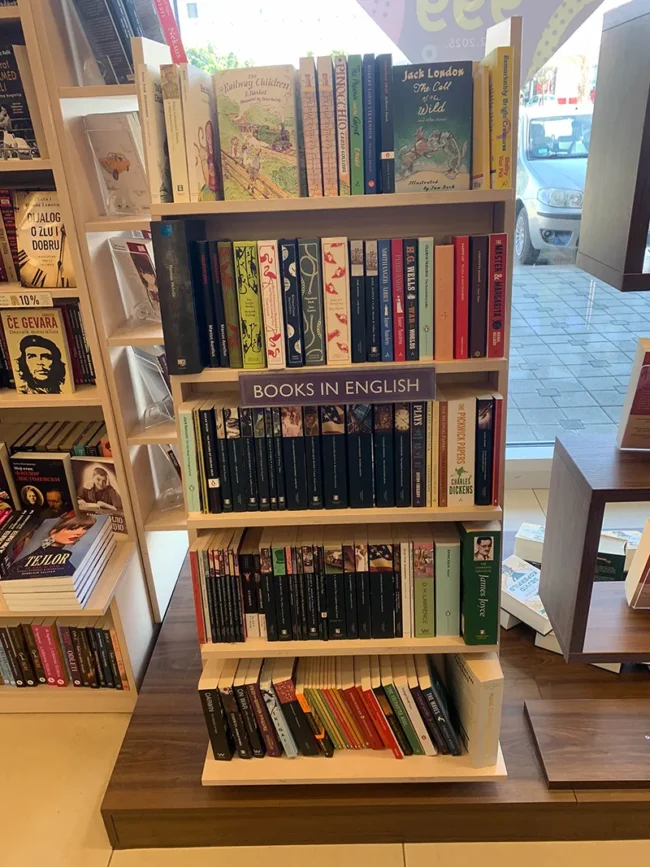
Oddly, the children’s books are on the top shelf, while down on the bottom shelf where a curious little kid might be poking around, you get child-friendly offerings like Darwin’s Descent of Man and Clausewitz’s On War. Anyway, the children’s books seem pretty good to me: nothing very recent, but a good selection of classics, from Heidi to The Railway Children and from Treasure Island to Gulliver’s Travels.
The books for adults follow a similar pattern, with a heavy tilt towards classics. Shakespeare gets the most, with nine different books—and there’s a clear preference for comedies over tragedies and histories. No Macbeth, no Hamlet no King Lear, but Measure for Measure and The Winter’s Tale? Interesting.
Dickens gets seven, although his doorstoppers take up far more shelf space than Shakespeare’s slim volumes.
Next in line is Jane Austen, with five different books on the shelf, although again the choices are interesting. No Sense and Sensibility or Pride and Prejudice, but they do include Lady Susan and Love and Freindship.
After that, it’s a decent sprinkling of classic literature through the ages, from the Meditations of Marcus Aurelius to To Kill a Mockingbird by Harper Lee. A lot of big names are present and correct, such as Melville, Defoe, Hardy, Wilde, Pope, Joyce, and P.T. Barnum. Yes, I suppose that last one is a bit of an outlier, but in general, I can’t argue with the selection.
One thing that’s missing is local literature in English translation. I often enjoy buying and reading local books, such as 912 Batu Road by Viji Krishnamoorthy in Malaysia and Norng Chan Phal: The Mystery of the Boy at S-21 in Cambodia.
Serbian literature in English translation is not on offer at this particular bookshop, simply because this area gets more or less no English-speaking visitors. The books here are being sold to local people who want to improve their English, so they wouldn’t be interested in reading books they could easily read in their own language. Bookshops in the capital, Belgrade, tend to have much better selections of Serbian literature in English.
Oddly, there are a few books on the shelf from other languages, though, such as Russian (Chekhov’s plays and Bulgakov’s The Master and Margarita), French (From the Earth to the Moon by Jules Verne), Japanese (Murakami’s Norwegian Wood) and German (the aforementioned Clausewitz).
It’s a shame that there aren’t many contemporary books on the shelf—the Murakami is the only one I can see that was published in the last 50 years, which almost makes me think that they ordered the Serbian edition and got sent the English one by mistake. I can see the logic of sticking with the classics to make things easier—the bulk of them seem to come from two publishers, Penguin Classics and Wordsworth Editions. But it does exclude a lot of fabulous contemporary writing from a much more diverse set of perspectives.
The Serbian-language books that take up the rest of the shop do include some more recent books by English-speaking writers such as Dzonatan Frenzen, Vudi Alen and even Kventin Tarantino.
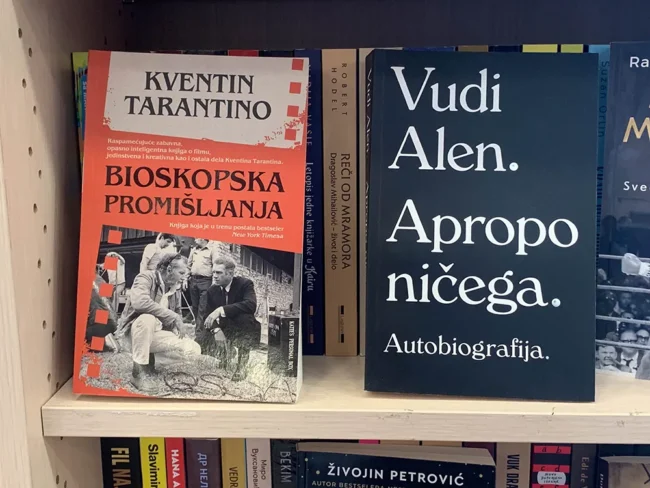
The spelling alterations, by the way, come about because the Serbian language lacks certain letters like “Q” and “W”, and others are pronounced quite differently (e.g. “J” sounds like “Y”). Unlike in English, Serbian letters are always pronounced in the same way, so the English spellings would be horribly confusing.
By the way, I’ve been keeping things simple so far by talking about books in the Latin script, but Serbian mostly uses the Cyrillic alphabet. Bonus points for anyone who can identify this one:
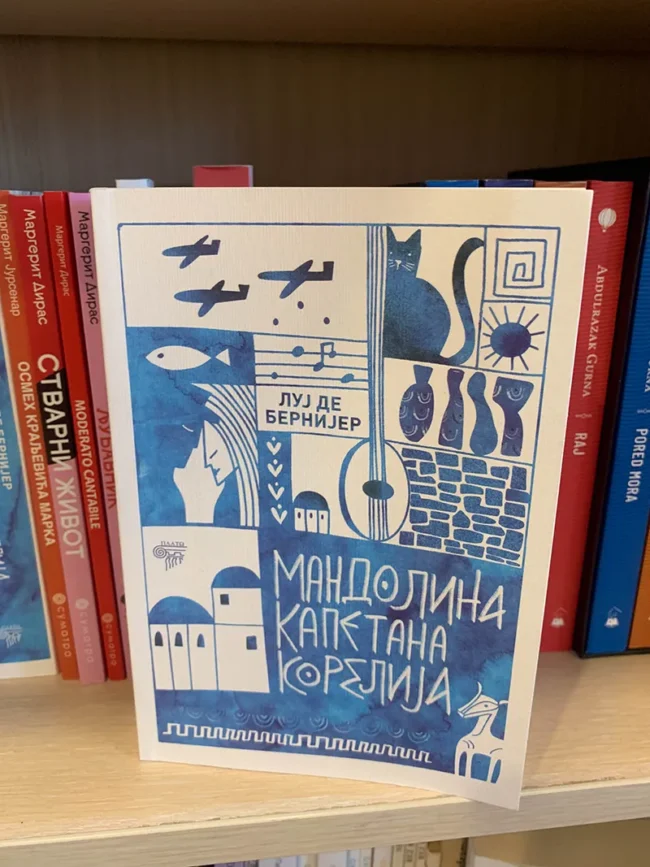
Let me know in the comments if you can work out what it is. If everyone’s stumped, I’ll add a hint later. Also let me know what you think of the selection on the “Books in English” shelf. How would you approach the task of picking books to include on a single shelf display?
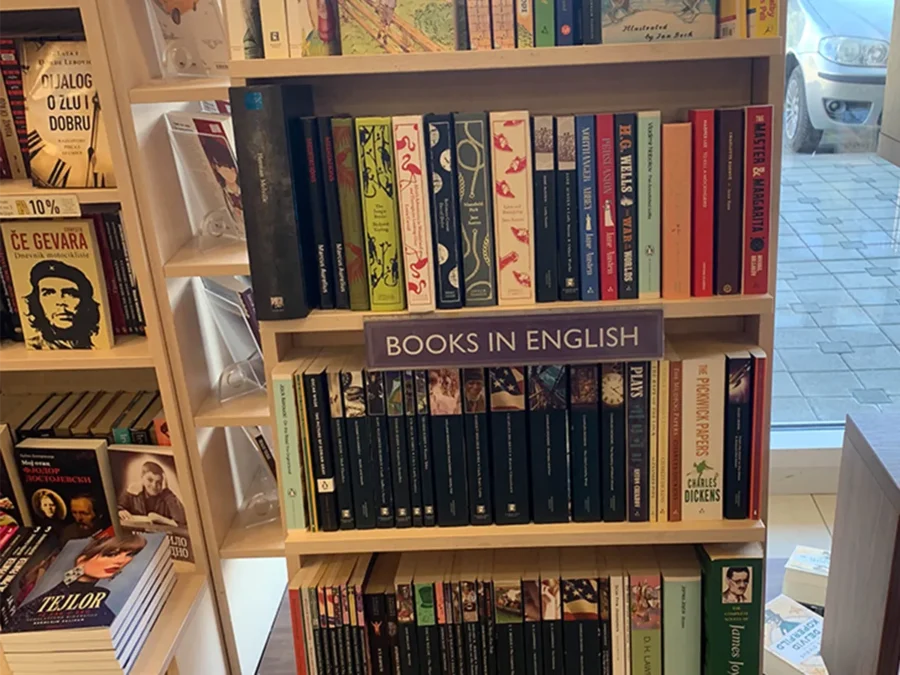
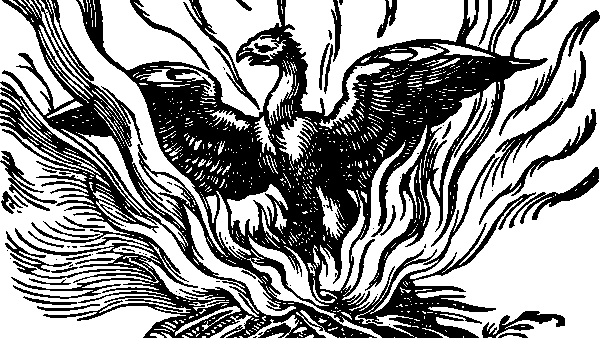


There are 14 comments
Interesting. What do I think? Though not many books, some gems. If they choose any of the children books or the rest, they won’t be disappointed, but, would a Serbian reader have enough English books to understand some of the few English literature? If not they can always try some of the other languages translations. I understood that one word was “de” and another “mandolin” but as I don’t know a book with that in the title I cheated and found Captain Corelli’s Mandolin, a book unknown to me.
I have recently acquired The Master and Margarita in Spanish and I am very excited about it, it’s also a great translation!
Well done with the Cyrillic test, Silvia! You’re right. Captain Corelli’s Mandolin was a very popular novel in the UK back in the 90s and was made into a film starring Nicholas Cage. The author, Louis de Bernières, is rendered more or less as Luy de Berniyer (it would be written with “j”s in Serbian but pronounced as “y”s.
Great that you’ve recently acquired The Master and Margarita! I loved it when I read it years ago. It’s also the name of my favourite pizza restaurant in Belgrade 🙂
Interesting. Maybe they only carry classics because they are the ones needed in English classes at school.
Yes, it could be that, Emma! Depressingly, whenever I meet a young person who speaks excellent English and ask how they learned, the answer is usually either “YouTube” or “video games”. But I like to think that there are still some kids who are learning by reading Treasure Island!
I think I like the children’s selections the best! Can’t go wrong. Nice variety.
I agree! I get the impression that kids in the UK are mostly reading more contemporary stuff these days, but I grew up on the classic children’s books and think they’re an excellent foundation.
No idea what that book with the cyrillic title is!
As for the shelf of English books, you say they are intended for people who want to practice their English but wow, Shakespeare is not going to help people with that! Perhaps it is as Emma suggested, they are for English classes at school.
Haha, you’re right! If I notice people talking to me in iambic pentameter, I’ll know where they got their English practice 🙂
I live in a non-English speaking country and I certainly prefer to have the English books separate from the others. I remember a book shop in NL where they would just move them with the authors or the subject. I didn’t like to hunt down the few English books they had throughtout the whole bookshop.
As to the books on the top or bottom. My local books hop has young adult books on the top and the more interesting ones for adults at the bottom. As I get older, I find it hard to bend down and look what kind of books they have for me. I would prefer it the other way around. After all, the younger people can reach to the bottom better than we can.
Oh yes, that would be annoying to have different languages mixed up! I’m definitely not at the stage where I can read book-length Serbian, so I need a separate section.
And the idea of children’s or young adult books at the top is very odd to me. Younger children wouldn’t be able to reach the children’s books on the top shelf in the bookshop I went too. And you’re right that it’s hard for adults to bend down to pluck books from the bottom shelf. Switching them around would make sense to me.
That’s so interesting! I love seeing the photos of the shop. What’s your experience of the Serbian language: I would guess you’re better at speaking than reading? But you’ve had a lot of time to practice by now, so maybe that’s a terrible guess! heheh
As for what is the book, I really have no idea…my guesses are Bulgakov’s M&M or Kundera’s ULofB. But I actually really love the not knowing of it (but I’m also curious). I love browsing in library sections for languages that I cannot speak or read, and just marveling at how different some of the books look. I remember one massive display of Harry Potter in Mandarin in one Toronto library, for instance.
Yes, I’m definitely better at speaking than reading. Still not great, mostly because we’ve spent so long travelling outside Serbia. I learn when I’m there, then forget while I’m away for months at a time, then start again when I’m back. So I’m making progress in a “two steps forward, one step back” kind of way. Serbian is also quite a complex language, with seven different cases and not much in common with the Western European languages I already know. I’m OK with short texts, but it’ll be a while before I can read a whole book in Serbian – and a while after that before I can read one in Cyrillic!
Silvia correctly guessed the Cyrillic book in a comment above, so I’ll leave it up to you whether you scroll up to see the answer or just embrace the mystery 🙂
That’s an interesting post. I guess English classics are the safest bet for the shop because this is what everybody knows outside England – English-language classics even if they first read them in their own language. It must be exciting to start reading them in the original, a least it was for me. It’s hard to imagine they are dying over there to read Moshfegh or Zevin in English 🙂 But, I may be wrong. I haven’t even heard of Captain Corelli’s Mandolin – looks and sounds interesting. I actually have five, six books that are set in Greece and I want to read, and I can never seem to start.
Yes, classics are always a safe bet! Good point about reading them in their own language too. Captain Corelli’s Mandolin was a big hit in the UK, but it’s quite old now (1994), and other commenters didn’t know it either, so it might not have been so popular internationally. Hey, maybe you can add it to your list, put all six or seven books in a suitcase, and have a relaxing holiday reading by the Aegean Sea somewhere 🙂